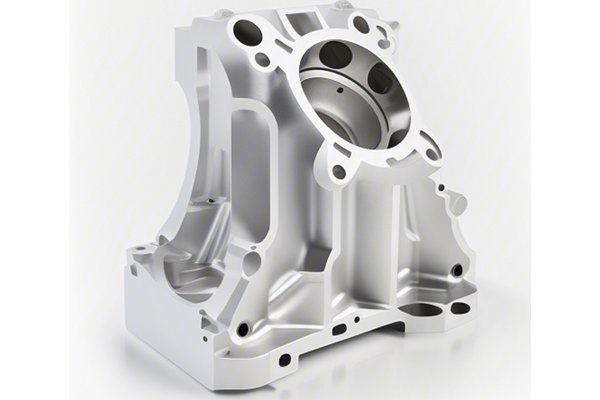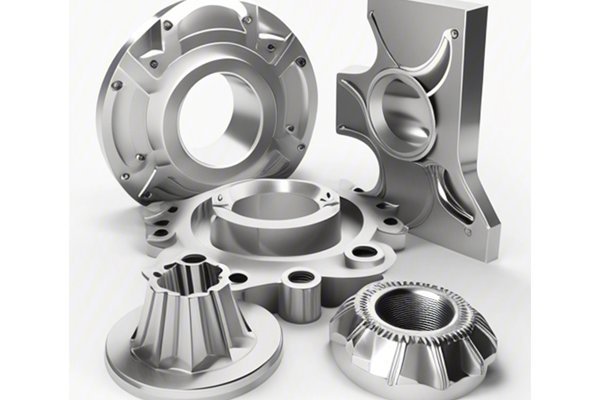Imagine standing at the edge of a vast ocean of possibilities, where innovation meets sustainability. This is precisely the scenario that manufacturers face today, particularly those who harness the incredible power of rapid prototyping. Nestled in the heart of this transformative process is China—an industry powerhouse that has redefined how prototypes are developed and produced. If you’re curious about how this phenomenon works, take a seat. We’re about to embark on an enlightening journey through the world of rapid prototyping in China.
What is Rapid Prototyping?
First off, let’s clarify what we mean by rapid prototyping. At its core, rapid prototyping is a method used to quickly fabricate a scale model (or prototype) of a part or assembly using three-dimensional computer-aided design. Think of it as the bridge that connects the abstract world of design with the tangible realm of production. Instead of waiting weeks or even months for a prototype to be produced, rapid prototyping can trim that timeline down to mere days. Now, that’s a time-saver!
But why is speed so important? In today’s fast-paced market, being the first to introduce a product can mean the difference between success and failure. Rapid prototyping allows companies to test ideas, gather feedback, and act quickly—all while minimizing costs and resources.
The Historical Context: How China Became a Leader
So, how did China emerge as a frontier in rapid prototyping? Well, let’s step back for a moment and take a look at the landscape. In the late 20th century, as globalization began to take root, manufacturing costs in China became a significant draw for businesses around the globe. With a wealth of resources, a massive workforce, and investment in cutting-edge technology, China positioned itself as the go-to location for various manufacturing needs.
The story doesn’t stop there, though. Over time, China took a leap into advanced manufacturing technologies, including rapid prototyping. A combination of government support for tech advancements and an entrepreneurial spirit propelled the country into the limelight. Today, China is not merely a follower in the rapid prototyping space—it’s a leader.
Technologies at the Forefront of Rapid Prototyping
Now that we have a grasp of the basics, let’s dive into the technologies that fuel this phenomenon. Rapid prototyping relies heavily on different techniques, and while there’s no one-size-fits-all approach, some methods stand out:
When people think of rapid prototyping, 3D printing often springs to mind. It’s like magic; you can turn digital designs into physical objects in a blink! This technique layers material (plastics, metals, or whatever you fancy) to create a prototype. The beauty of 3D printing lies in its versatility. Need a complex geometry? No problem! Want to create intricate details? Consider it done!
Picture a sculptor chiseling away at a block of marble; that’s essentially what CNC (Computer Numerical Control) machining does, but with metal, plastic, or wood! In CNC machining, a computer controls the movement of tools to shape the prototype. This technology excels in producing highly accurate and durable prototypes and is particularly favored when dealing with metals—think aluminum, brass, and stainless steel.
If you’re looking to create a high volume of parts, injection molding is your best friend. This method involves injecting molten material into a mold, cooling it, and voila! You have a finished product. It’s remarkably effective for creating plastic prototypes and parts that need to withstand the test of time.
Ever wonder how they carve intricate designs on a cake? Laser cutting is similar, but instead of frosting, it slices through materials with pinpoint precision. Whether it’s acrylic, wood, or metal, laser cutting leaves a clean and polished finish, making it an excellent tool for prototyping.
Advantages of Rapid Prototyping in China
Now that you’ve got a basic understanding of the technologies involved, let’s discuss why rapid prototyping in China offers unparalleled advantages.
Speed to Market
As emphasized earlier, speed is paramount in today’s fast-paced business environment. Companies that use rapid prototyping can go from idea to finished product in record time, allowing them to seize market opportunities before competitors have a chance to respond. With China’s efficient manufacturing infrastructures, companies can push through designs and get them into the hands of consumers far quicker.
Cost-Effectiveness
Next up is cost. In manufacturing, every penny counts, right? Rapid prototyping helps save money by minimizing waste and reducing the need for extensive revisions. With China’s competitive pricing and access to advanced production resources, businesses can save significantly while still pushing high-quality prototypes into the market.
Access to Cutting-Edge Technology
Let’s face it: not every company can afford the latest tech, but in China, innovation is part of the game. Many rapid prototyping firms invest heavily in state-of-the-art equipment and software. By partnering with these firms, businesses gain access to technologies that may otherwise be out of reach.
Skilled Workforce
Though we often stereotype manufacturing as low-skill labor, the reality is far different. China boasts a highly-skilled workforce well-versed in the nuances of rapid prototyping. From engineers to technicians, the talent pool is vast and diverse, ensuring prototyping projects are in capable hands.
Flexibility and Customization
One of the hallmark traits of rapid prototyping is its adaptability. Need to make last-minute changes? No problem! Prototyping allows for tweaks and modifications at various stages in the process, which can be crucial when striving for that ‘just-right’ final product.
Industries Benefiting from Rapid Prototyping

From the automotive sector to consumer electronics, rapid prototyping finds its way into numerous industries:
Rapid prototyping allows automakers to experiment with new designs, conduct crash tests, and streamline production processes—all before breaking ground on mass manufacturing.
From custom prosthetics to surgical tools, rapid prototyping helps create specialized solutions tailored to patient needs.
With consumers constantly craving the next big thing, companies utilize rapid prototyping to bring innovative gadgets to life quickly.
In the aerospace industry, every gram counts. Rapid prototyping aids in designing lightweight components and testing new technologies efficiently.
Designers can experiment with various shapes and materials, bringing unique and stylish furniture to market.
Overcoming Challenges in Rapid Prototyping
Despite the multitude of benefits, rapid prototyping isn’t without its challenges. Here are a few hurdles manufacturers may face, along with ways to address them.
Quality Control
Quality is non-negotiable in manufacturing. To bypass quality-related issues, manufacturers should establish robust quality control processes throughout the prototyping process. Implementing regular inspections and using advanced software to simulate stress tests can help identify any flaws early on.
Material Limitations
While the latest technologies are impressive, there may be limitations concerning the availability and compatibility of materials. Companies should conduct thorough research on material properties and choose the best fit for their projects.
Intellectual Property Concerns
In a global market like China’s, protecting intellectual property can be daunting. Companies should take the initiative to patent their designs and work with reputable firms that respect IP rules.
Future Trends in Rapid Prototyping
The landscape of rapid prototyping is always shifting. Let’s take a peek into the horizon to identify promising trends:
Increased Automation
With the rise of smart manufacturing technologies, we can expect to see more automated processes in rapid prototyping facilities. This will likely lead to enhanced efficiency and reduced lead times.
Sustainable Materials
As concern for the environment escalates, the demand for sustainable materials grows. Future rapid prototyping initiatives may focus on bio-based or recycled materials to lessen environmental impact.
Integration of AI and Machine Learning
Artificial Intelligence and Machine Learning are transforming industries far and wide. The integration of AI in manufacturing could lead to more streamlined workflows, smarter designs, and enhanced quality standards.
Conclusion: Embracing the Revolution
As we conclude this exploration of rapid prototyping in China, one thing is crystal clear: we’re living in exciting times. With technological advancements accelerating daily, the potential for innovative designs is virtually limitless. Manufacturers can ride the wave of rapid prototyping to enhance product development cycles, minimize costs, and keep pace with consumer demands.
So, whether you’re a budding entrepreneur, a seasoned professional, or someone simply intrigued by the world of manufacturing, the message rings true: embrace the revolution. Rapid prototyping in China is not just about speed; it’s about unleashing creativity and pioneering a new era of efficient manufacturing. Are you ready to dive in? The future awaits!






